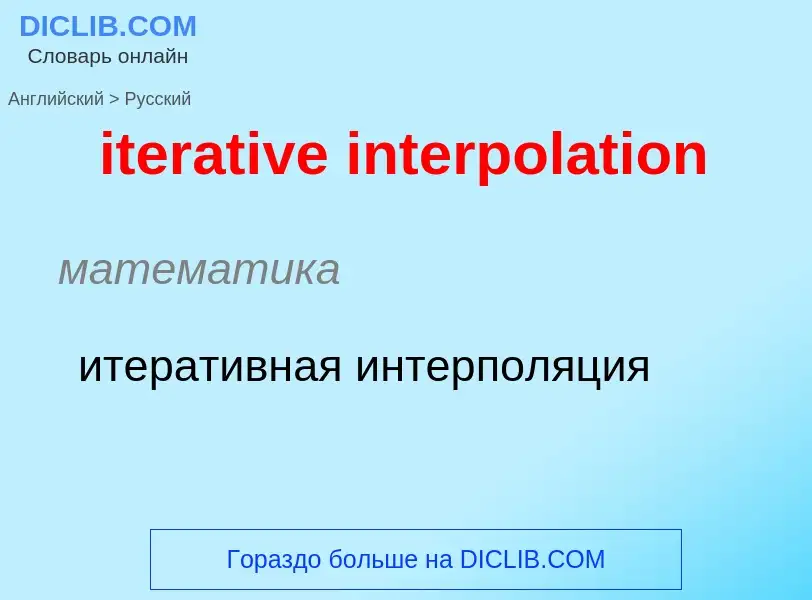Vertaling en analyse van woorden door kunstmatige intelligentie ChatGPT
Op deze pagina kunt u een gedetailleerde analyse krijgen van een woord of zin, geproduceerd met behulp van de beste kunstmatige intelligentietechnologie tot nu toe:
- hoe het woord wordt gebruikt
- gebruiksfrequentie
- het wordt vaker gebruikt in mondelinge of schriftelijke toespraken
- opties voor woordvertaling
- Gebruiksvoorbeelden (meerdere zinnen met vertaling)
- etymologie
iterative interpolation - vertaling naar russisch
математика
итеративная интерполяция
Wikipedia
In mathematical logic, Craig's interpolation theorem is a result about the relationship between different logical theories. Roughly stated, the theorem says that if a formula φ implies a formula ψ, and the two have at least one atomic variable symbol in common, then there is a formula ρ, called an interpolant, such that every non-logical symbol in ρ occurs both in φ and ψ, φ implies ρ, and ρ implies ψ. The theorem was first proved for first-order logic by William Craig in 1957. Variants of the theorem hold for other logics, such as propositional logic. A stronger form of Craig's interpolation theorem for first-order logic was proved by Roger Lyndon in 1959; the overall result is sometimes called the Craig–Lyndon theorem.




